This year, 2023, marks the 130th anniversary of the first cultured pearl. If you have been following The Pearl Girls for the past couple of decades, you have seen my posts about Mikimoto and the advent of cultured pearls. But, in case you are new around here, I will give you a quick run down.

Natural pearls are formed by nature versus cultured pearls that form when someone works with nature to create a pearl. Both pearls are essentially natural but cultured pearls are not spontaneously produced. Cultured pearls are not subject to being lost at the bottom of the ocean or lake (nets that hold the mollusk make sure they do not expel the pearl). A billion cultured pearls can be harvested each year. Natural pearls are the luck of the shuck (and they are not too common either.)
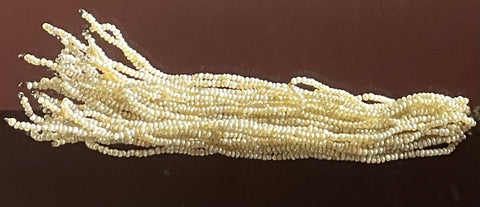
Remember the line in The Great Gatsby when, the day before Daisy’s wedding, her betrothed,Tom Buchanan, “gave her a string of pearls valued at three hundred and fifty thousand dollars.” Sure, it was a way to show off his wealth but, again, a strand of natural pearls was a show of wealth. They were extremely expensive a long time ago. They still are expensive, and a lot harder to find!
The Great Gatsby takes place in 1922. Outside of the world of fiction, Mikimoto cultured his first pearl in 1893. It was a half pearl, flat on one side and round on the other. It would take a few more years for him to culture a round pearl. And more years still for the cultured pearls to be a mainstay in the market.
There are statistics a plenty, and I have always been curious about their accuracy. Some say one in a thousand mollusks produce a pearl, and one in 10,000 mollusks produce a gem quality pearl. I am not sure how one comes up with that statistic although I do agree that natural pearls are not common.
I also know that in the early 1900s natural pearls were very expensive and there was a huge industry devoted to the discovery of natural pearls. Divers harvested many, many oysters to find pearls. Lakes and rivers were robbed of their bivalves in the hopes of finding a pearl. Many mollusk populations were devastated by overfishing.

So, Mikimoto deeply impacted this industry. Which is a whole story in itself. Check out my other blogs where I go more in depth…
But, today, I want to talk about pearl pants.

When we explore jewels from hundreds of years ago, we are used to seeing stones. Diamonds, rubies, sapphires…these are the more prolific gems. These stones are hard and can withstand harsh conditions. Pearls, they are more delicate, rare, harder to find and (if you ask me) more precious to behold. They are not always a mainstay… especially when natural pearls are the only go-to.
So, when exploring the Topkapi Palace in Instanbul, i was easily taken with the gorgeous display of natural pearls.
Starting with these pants…

This piece was created from this one natural pearl, one that looks like pants. And the artist created this figure from the pearl inspiration.
And then there is another figurine, created from a natural pearl “top.”
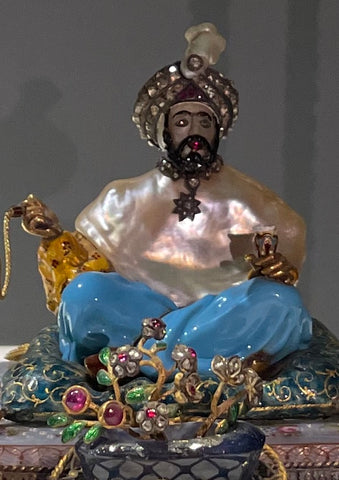
These figures were a gift for the 32nd Sultan of the Ottoman Empire, Suntan Abdulaziz, who reigned from 1861 to 1876. But these were gifted when he was just a Prince. Natural pearls to honor a future sultan.
Long before Mikimoto crafted a cultured pearl, there were marvels to behold in natural pearls. And artists used them in their creations.
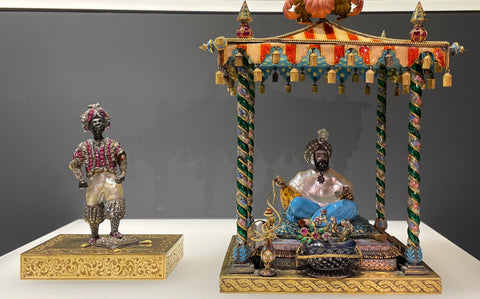
Even earlier, Sultan Mahmud I, who reigned from 1730-1754 was gifted with this throne and step. Look at all of the pearls!

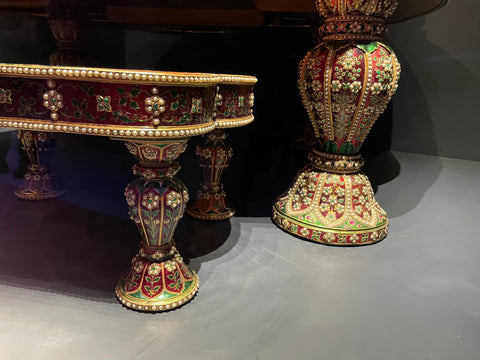
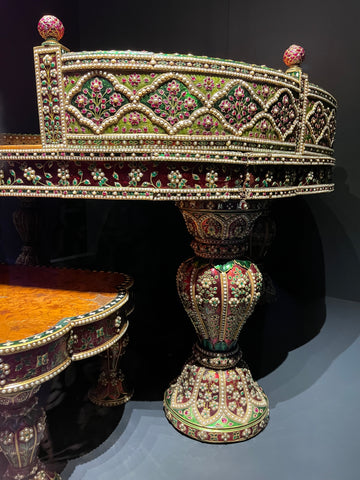
What else is honored with natural pearls?
Various headresses from the 17th and 18th centuries.
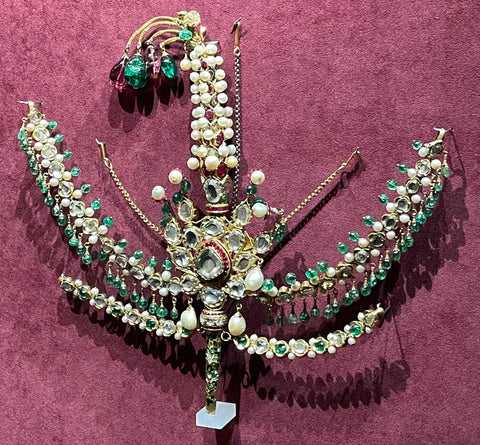
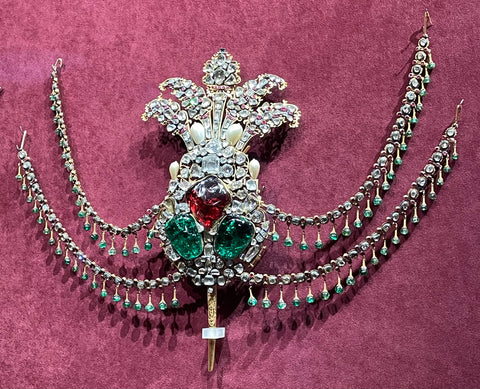
An Ottoman belt from the 18th century
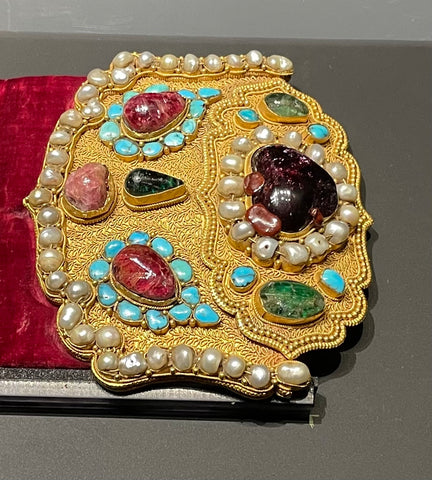

A 19th century perfume stand
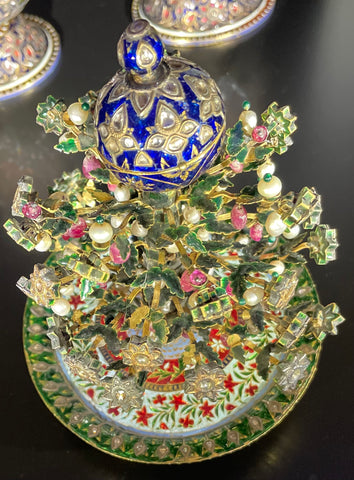
Also in Istanbul are some of the gifts the sultans had crafted for the Prophet Muhammad’s tomb. Faith and riches have always been closely intertwined and I was astounded by the rich gems crafted in honor of the Muslim prophet. These pendants, from the 18th and 19th centuries, were crafted of natural pearls.
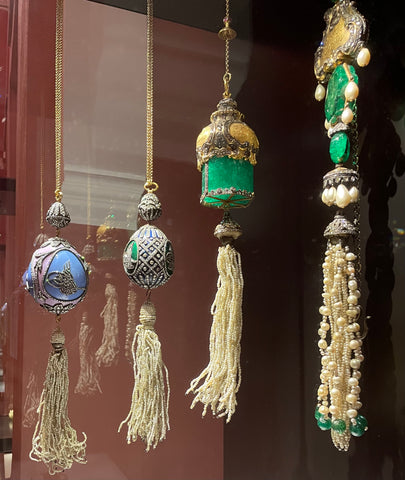

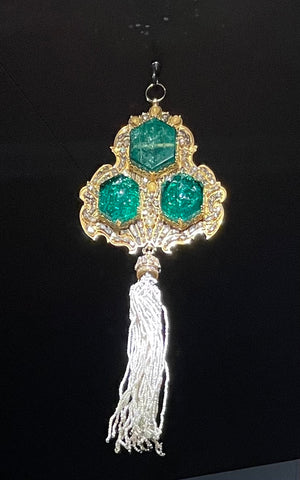
Yes, the gems are stunning, too. No doubt about it.
But, knowing the rarity of natural pearls, these pre-Mikimoto pearls are a marvel. They are gorgeous treasures of the Ottoman Empire. And, honestly, who doesn’t love a pair of pearl pants!
Love,
India





0 comments